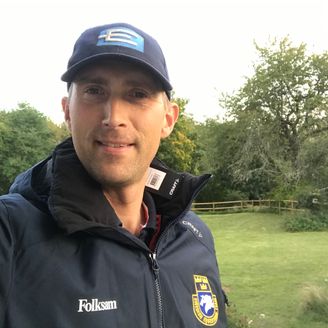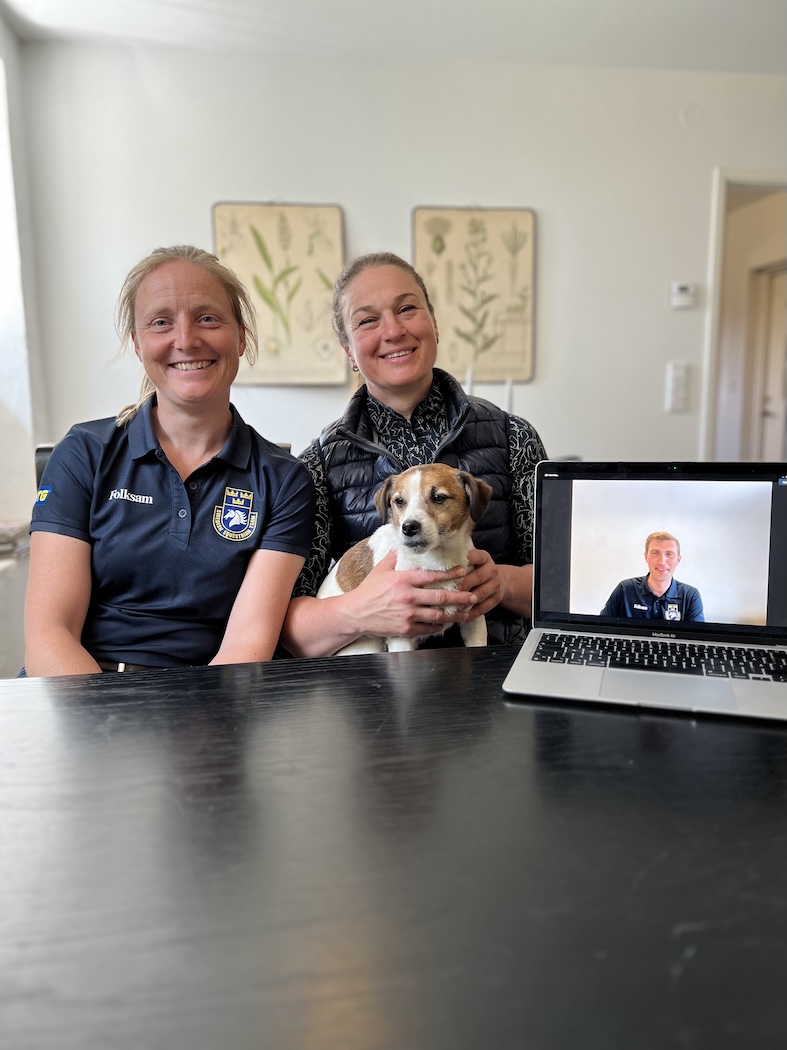
19 October 2023
Together with Enar Tollig, team vet for the Swedish national eventing team and Aminda’s treating vet Helena Gunnarsson she discusses the importance of good communication and exchange of information around her horses.

Keen on perfecting every detail, Aminda Ingulfson has worked her way to the top of Swedish eventing, making her championship debut at the FEI World Championship in Pratoni, Italy, in 2022. A good team of professionals around her has been vital for her success, she says. One of these individuals is Helena Gunnarsson, an equine veterinarian with a clinic close to Aminda’s farm in the south of Sweden, another Enar Tollig, team veterinarian. Together, they have pioneered a three-way partnership aimed at promoting the long-term soundness of Aminda’s horses.
Enar: One of my tasks is to accompany Aminda and support her during competitions to solve any health issues that may arise on location. Another is to act as a sounding board for Aminda and the other riders in the team to contribute to solving problems that may occur at home or during training.

The Swedish eventing team, with several bronze medals from the European Championship, is looking to bag more medals by focusing on three areas: improved times in the cross-country, higher scores in the dressage – and, importantly, the long-term soundness and welfare of the team horses. Continuous monitoring is key here, as it helps prevent injuries and excess strain.
Helena: Aminda and I discuss frequently – and not only when a problem arise. Almost all horses at this level will be faced with issues potentially limiting their performance, and our job is to mitigate these as early as possible. What I really appreciate about Aminda is that she contacts me as soon as she feels that there is something wrong, at the earliest indication of a problem as opposed to in a panic situation.
I also have a very good, continuous dialogue with Enar. He needs to decide which horses are fit to compete, and by sharing insights based on my engagement as well as gait analysis data, we can both do a better job by Aminda’s horses.
Enar: The dialogue I have with Helena is extremely important to gain vital information about the health status of the horse. If it, for instance, shows a mild asymmetry, say an irregularity in one of its front legs, I want to understand how long it’s been going on – and why. Will it be dangerous to put pressure on it? Having access to both data and the insights of Helena really makes my job a lot easier.
One of my personal goals is to establish the same contact with all treating vets involved with the team horses as the one I have with Helena. It makes a difference!
Aminda: Sleip is an important facilitator for us. If something feels a little off, it is easy for me to use Sleip to get a second opinion from Helena. It saves me a lot of time, as I don’t have to book an appointment and bring my horse to her as soon as I suspect that there is something wrong. I send her a Sleip recording, and then we can discuss it over the phone when she’s got the time.


Helena: And me, in my turn, I can send Sleip videos and data to Enar when I feel that there is some information I need to share or something I want to discuss. It’s an easy way to collaborate and know we are looking at the same documentation. Also, sometimes I get the feeling that my eyes get used to the level of asymmetry when I look at a horse I know well. Looking at previous measurements gives me a quantified baseline of the movement pattern, and I can easily compare the last measurement with today's. The measurements show even very subtle discrepancies or changes.
Aminda: I think one of the reasons why I’ve reached this level is that I am so genuinely committed to assuming a long-term view on horse management. That means I don’t rush to push the horse to go up in class, I take my time bringing it back after rest, and I do my best to detect and address any problems early on. Sleip provides a good tool for anyone interested in monitoring their horse’s motion and response to training, as well as supporting a preventative approach to horse health and welfare. In eventing, training is naturally varied, which is great for the horse and one of the reasons why I got hooked on the sport. But a great team around me is also essential, including vets, farriers and physiotherapists.
Enar: Overall, Sleip allows me to connect with the riders more frequently. When they “sleip” their horse, I not only receive videos and data that help me form an opinion about the horse's health status, it is also an opportunity to reach out and touch base with the rider.
Enar: Together, we are stronger than on our own. Everyone can contribute in a team with different ideas and approaches to solving a problem. Of course, two vets can have different opinions – but by sharing experience and knowledge, we have a better chance of reaching the best solution. And when you use Sleip, you receive objective data, which is very difficult to ignore and gives you something to look at as you discuss.
Helena: There is a certain amount of prestige in this world – but that is something you must let go of. And vets do get more and more used to sharing information, which everyone benefits from – not least the horses. Objective data and tools like Sleip removes the drama from the dialogue and makes it more neutral.
Aminda: Being able to communicate easily with both Helena and Enar is a great way of making my horses perform at their best. I also really appreciate Helena’s and Enar’s ability to communicate with each other directly and not only through me - both when it comes to solving immediate problems and promoting the long-term durability of my horses.
Enar: The more I’ve learnt, the more I’ve understood the importance of thorough analysis. It’s important that the vet tries to understand a potential problem from all aspects, making use of both data and insights from other professionals around the horse, including how it’s experienced by the rider. Initial suspicions may provide direction, but these comprehensive insights guide our search.
